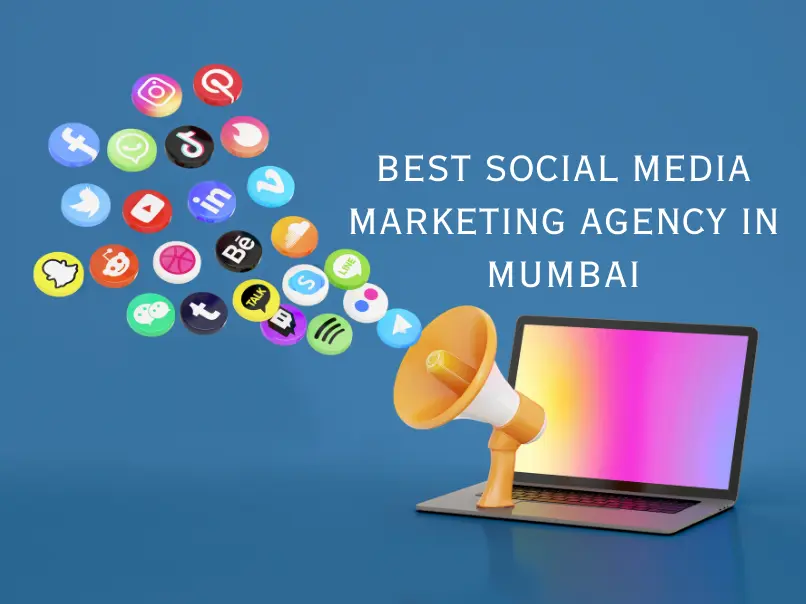Digital Marketing Strategy: 10 Effective Tips for Small Businesses
Last updated on March 12, 2024
Introduction
In today’s digital age, small businesses must establish a solid digital marketing strategy to succeed. A well-thought-out digital marketing strategy may help small businesses compete with larger competitors, reach their target audience effectively, and meet their business objectives. You can choose Best Digital Marketing Company in Mumbai for all your digital marketing strategy. This blog post will discuss 10 practical tips for small businesses to create a successful digital marketing strategy.
1) Understand Your Audience:

The first step in developing a digital marketing strategy is identifying your target audience. Research their demographics, interests, and online behavior to customize your marketing efforts. Understanding your audience allows you to create content and campaigns that connect with them and increase engagement.
2) Set Clear Goals:
In today’s digital age, small businesses must establish a solid digital marketing strategy to succeed. A well-thought-out digital marketing strategy may help…

Define your digital marketing goals. Clear goals, whether for increasing brand awareness, generating leads, or driving sales, will allow you to measure your success and progress. Without clear goals, it’s challenging to measure the effectiveness of your efforts and track your progress. Goals help to direct and focus your digital marketing strategy. They assist you in prioritizing your efforts and distributing resources effectively to achieve your goals. By defining your objectives, identifying KPIs, setting specific targets, developing a timeline, and tracking your progress, you can ensure that your digital marketing efforts are focused, effective, and ultimately successful.
3) Create Engaging Content:
Digital marketing depends heavily on content. Create high-quality, relevant content that adds value to your audience. This may include blog posts, videos, infographics, or social media posts. Engaging content can help you attract and retain customers while positioning your brand as a thought leader in your industry. Storytelling is an effective way to engage your audience. Use storytelling techniques to create narratives to draw in your audience and make your content memorable.
4) Optimize for Search Engines:
Use search engine optimization (SEO) techniques to boost your website’s visibility in search engine results. This includes utilizing relevant keywords, producing high-quality content, and optimizing your website’s technical aspects. Conduct keyword research to identify the terms and phrases your target audience is searching for. Use tools like Semrush Include your target keywords in your title tags, meta descriptions, headings, and body content to improve its SEO. Ensure your content is well-structured and easy to read and that relevant keywords are used naturally.
5) Utilize Social Media:
Social media platforms are practical tools for reaching your target audience and increasing brand awareness. Use platforms like Facebook, Twitter, and Instagram to interact with your audience, share content, and promote your products or services. Social media can also provide valuable information about your target audience and their preferences. By utilizing social media effectively, you can increase brand awareness, engage with your audience, and drive traffic and leads for your business. Incorporate these strategies into your digital marketing strategy to maximize your social media presence and achieve your business goals.
6) Email Marketing:
Email marketing is a low-cost way to directly communicate with your target audience. Use email campaigns to send subscribers updates, promotions, and valuable content. Customize your emails to be more relevant and engaging for your target audience. Experiment with different elements of your emails, such as subject lines, content, and CTAs, to see what resonates best with your audience. A/B testing can help you optimize your emails for better results. Use email marketing analytics to track the effectiveness of your email campaigns. Monitor metrics such as open rates, click-through rates, and conversion rates to determine what works and needs improvement.
7) Leverage Paid Advertising:
Paid advertising, such as Google Ads or Facebook Ads, can help you reach a larger audience and increase traffic to your website. To maximize your return on investment, ensure your ads are effectively targeted. Paid advertising can be a practical addition to your digital marketing strategy, especially if you want to target a specific audience or promote a particular product or service. To reach your ideal audience, use the advertising platform’s targeting options. Demographics, interests, behaviours, and other factors may be considered when targeting. The more specific your advertisements, the more effective they will be.
8) Monitor and Analyze Your Results:
Keep track of your digital marketing steps and analyze their results regularly. This will help you understand what is and isn’t working, allowing you to adjust your strategy accordingly. Track your website’s traffic, engagement, and conversion rates using Google Analytics. By analyzing your results, you can identify areas for improvement and optimize your digital marketing strategy to achieve better results.Compare your performance data over time to discover trends and patterns. Look for any changes in performance and figure out what factors contributed to them. By effectively monitoring and analyzing your results, you can gain valuable insights into your digital marketing performance and make informed decisions to improve your strategy’s efficiency.
9) Stay Up-to-Date with Trends:
The digital marketing landscape is ever-changing, with new trends and technologies constantly emerging. Keep up with the latest digital marketing trends and technologies to ensure your strategy remains fresh and compelling. Attend industry events, read blogs, and follow industry experts on social media to stay current on the latest trends and best practices.
10) Be Consistent:
Consistency is essential in digital marketing. Maintain consistency in your messaging and marketing across all channels to build trust and credibility with your target audience. Make a content calendar to plan and schedule your content in advance. This allows you to keep a consistent posting schedule and ensure your content is relevant and timely. Stay up to date on digital marketing trends and best practices. The world of technology is constantly changing, so staying current is critical to remaining relevant and practical.
March 11, 2024



